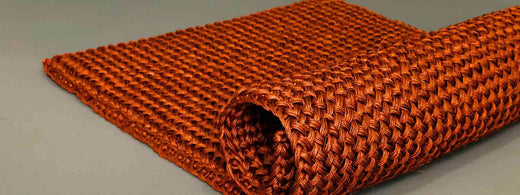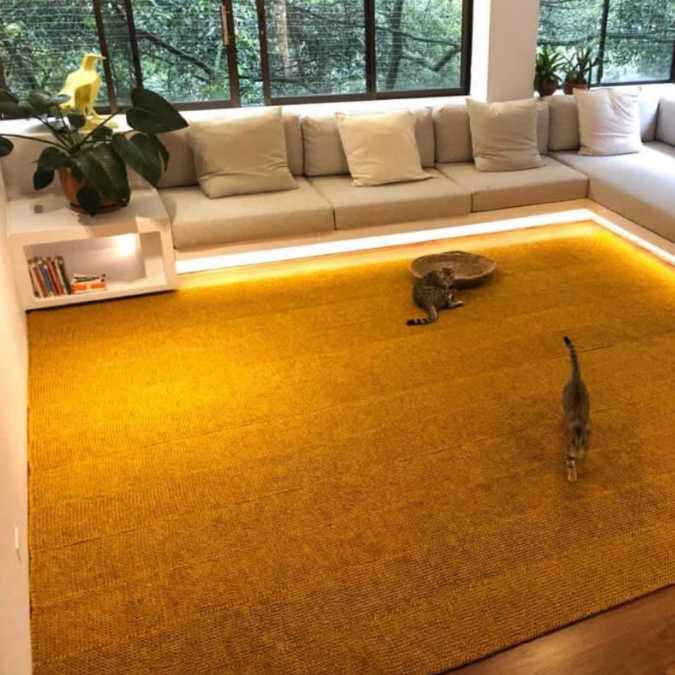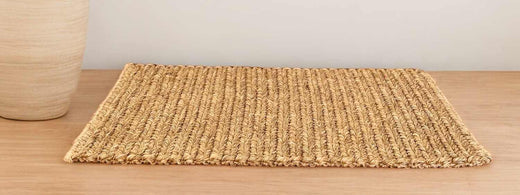
The Timeless Charm of Artisan Natural Rugs: Spotlight on Sisal and Jute
In a world where mass-produced items dominate, there’s something uniquely charming about artisan-crafted goods. Natural rugs, particularly those made from sisal and jute, stand out for their beauty, sustainability, and craftsmanship. Let’s delve into the world of these handcrafted treasures, focusing on their materials, techniques, and the unique qualities they bring to any space.
The Charm of Sisal and Jute Rugs
Sisal Rugs
Sisal is a natural fiber derived from the Agave sisalana plant. Known for its durability and strength, sisal is an excellent material for rugs, especially in high-traffic areas. Sisal rugs are celebrated for their natural beige tones, though they can be dyed to create a variety of colors and patterns. They bring a warm, earthy feel to any room, making them a popular choice for eco-conscious homeowners.
Jute Rugs
Jute, often referred to as the ‘golden fiber,’ is obtained from the stems of the jute plant. Jute rugs are softer than sisal rugs, offering a more cushioned feel underfoot. They are prized for their natural beauty, with a golden-brown hue that can complement a wide range of interior designs. Jute rugs are ideal for adding a rustic or bohemian touch to a space.
Handmade with Care: Weaving Techniques
The artistry behind jute and sisal rugs lies in their handmade nature. Let’s explore some of the traditional weaving techniques used by artisans to create these beautiful rugs.
Braided Technique
Braiding is one of the most traditional techniques used in rug making. Artisans intertwine strands of sisal or jute to create a thick, durable braid. These braids are then coiled and stitched together to form the rug. The braided technique not only enhances the rug's durability but also gives it a textured, rustic look that’s perfect for adding character to a room.
Crochet Technique
Crochet involves using a hook to interlock loops of sisal or jute yarn. This technique allows for intricate patterns and designs, resulting in a rug that’s not only functional but also a piece of art. Crochet rugs can be made in various shapes and sizes, making them versatile pieces for different areas of the home.
Loom Weaving
Loom weaving is a method where fibers are woven on a loom to create a tight, consistent weave. This technique produces flat, even rugs that are highly durable and visually appealing. Loom-woven sisal and jute rugs often feature geometric patterns and can range from simple, minimalist designs to more complex and colorful motifs.
Perfect for Small Spaces
While natural sisal rugs come in all sizes, there’s a special appeal to smaller, artisan-made rugs. These petite wonders are perfect for adding a touch of warmth and style to compact spaces. Small sisal rugs can be used in a variety of ways:
- Entryways: A small sisal or jute rug can make a welcoming statement in your entryway, setting the tone for the rest of your home.
- Bathrooms: Add a touch of nature to your bathroom with a small, absorbent jute rug.
- Kitchens: Place a durable sisal rug in front of the sink for a blend of style and practicality.
- Bedrooms: Use a soft jute or sisal rug beside the bed for a cozy landing spot for your feet in the morning.
Sustainability and Ethical Craftsmanship
Choosing sisal rugs is not just a design decision but also an ethical one. These natural fibers are biodegradable and have a low environmental impact. Moreover, supporting artisan-made rugs helps preserve traditional crafts and provides fair wages to skilled weavers.
Caring for Your Natural Sisal Rug
To maintain the beauty and longevity of your sisal or jute rug, regular care is essential. Here are some tips:
- Vacuum Regularly: Remove dirt and debris to prevent the fibers from becoming embedded.
- Avoid Moisture: Natural fibers can be sensitive to moisture. Clean up spills promptly and avoid placing the rug in damp areas.
- Rotate Periodically: To ensure even wear, rotate your rug every few months.
Artisan natural rugs made from sisal and jute are more than just floor coverings; they are pieces of art that tell a story of tradition, sustainability, and craftsmanship. Whether you choose a braided, crochet, or loom-woven rug, these handcrafted treasures can add warmth, beauty, and a touch of nature to your home. Embrace the charm of artisan rugs and transform your space with the timeless elegance of sisal and jute.






Leave a comment
This site is protected by hCaptcha and the hCaptcha Privacy Policy and Terms of Service apply.